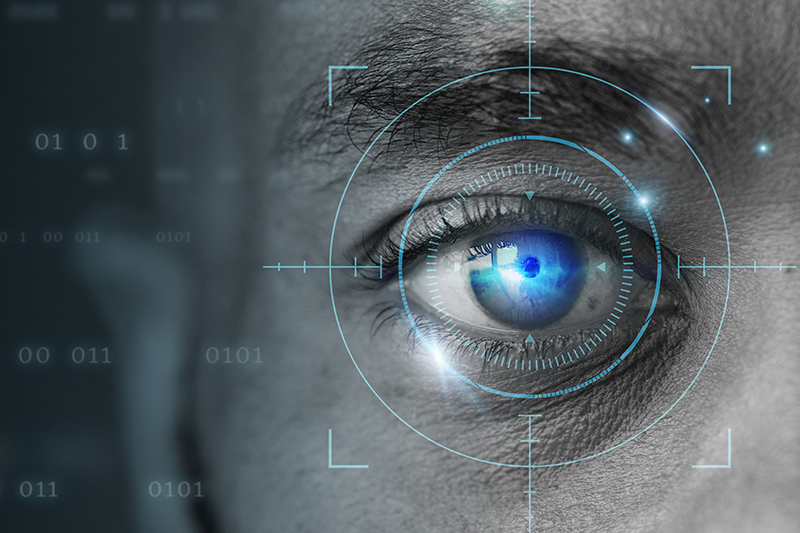Regarded as a common eye disorder, Blepharitis occurs due to inflammation of the eyelids. Also called lid margin disease, the condition normally affects both eyes along the edges of the eyelids. However, in some rare cases, the condition may affect only one eye, but this is quite uncommon. It occurs when tiny oil glands near the base of the eyelashes become clogged. On the other hand, occurrence of certain skin conditions or bacterial infections or a combination of both can also lead to this eye disorder. As a result, the eyelids may become red, swollen and scaly. Once blepharitis occurs, you may also get a secondary infection. Even though uncomfortable and unsightly, the condition is not contagious and won’t cause permanent damage to the eyesight.
Billing and coding for chronic eye conditions can be challenging. Ophthalmologists treating different types of eye disorders need to ensure that the medical billing and coding for the same is done appropriately on their medical claims. Billing and coding services provided by a reputable ophthalmology medical billing company can help physicians use the correct codes for their billing purposes.
Causes, Symptoms and Treatment
There are two different types of eyelid inflammation. Anterior eye inflammation occurs on the outside of the eye. Posterior eyelid inflammation, on the other hand, occurs on the inner edge of eyelids. Most forms of blepharitis affect adults and children of both genders equally. However, certain forms, such as staphylococcal blepharitis, affect mainly women – 80 percent of cases. The exact cause of eyelid inflammation is unclear, but several factors like – allergies (including allergic reactions to eye medications, contact lens solutions or eye makeup) and infections may increase the risk of this condition. Other related risk factors include – Seborrheic dermatitis (dandruff of the scalp and eyebrows), clogged or malfunctioning oil glands in the eyelids, Rosacea (facial redness), eyelash mites or lice, and dry eyes.
Generally, inflammation of the eyelids is noticeable as it can irritate the eyes and possibly affect the vision. The signs and symptoms of the condition become worse in the morning. Common symptoms include –
- Red and watery eyes
- Sensitivity to light
- Oily eyelids
- More frequent blinking
- Itchy and swollen eyelids
- Flaking of the skin around the eyes
- Eyelids that appear greasy
- Eyelid sticking
- A feeling that something is in or on your eyes
- A crust on the eyelashes or in the corners of the eyes
Diagnosis of this inflammatory eye condition begins with a detailed eye examination. This can help identify signs of as well as the presence of bacteria, fungi, or viruses, which can indicate an infection. If any specific sign of an infection is identified, the eye specialist will perform swabbing for detailed testing. Swabbing involves collecting a sample of fluid seeping from the eyes and performing detailed analysis to check for any signs of bacteria, fungi or evidence of an allergy. Self-care measures like – washing the eyes and applying a warm compress is the first line of reducing inflammation. However, if the self-care measures do not bring in any visible improvements, eye specialists may recommend other prescription treatments. This may again depend on the severity of inflammation and whether the inflammation is caused by an infection. Other additional treatment modalities include – Steroid treatment and antibiotics to reduce inflammation and control infection. On the other hand, blepharitis caused by other diseases like seborrheic dermatitis or rosacea can be effectively controlled by treating the underlying disease.
All diagnoses, screening and treatment procedures administered must be carefully documented using the correct medical codes. Medical billing services provided by established medical billing and coding companies can ensure the correct codes on the medical claims. ICD-10 diagnosis codes for Blepharitis include –
- H01.0 Blepharitis
- H01.00 Unspecified blepharitis
- H01.001 …… right upper eyelid
- H01.002 …… right lower eyelid
- H01.003 …… right eye, unspecified eyelid
- H01.004 …… left upper eyelid
- H01.005 …… left lower eyelid
- H01.006 …… left eye, unspecified eyelid
- H01.009 …… unspecified eye, unspecified eyelid
- H01.00A …… right eye, upper and lower eyelids
- H01.00B …… left eye, upper and lower eyelids
- H01.01 Ulcerative blepharitis
- H01.011 …… right upper eyelid
- H01.012 …… right lower eyelid
- H01.013 …… right eye, unspecified eyelid
- H01.014 …… left upper eyelid
- H01.015 …… left lower eyelid
- H01.016 …… left eye, unspecified eyelid
- H01.019 …… unspecified eye, unspecified eyelid
- H01.01A …… right eye, upper and lower eyelids
- H01.01B …… left eye, upper and lower eyelids
- H01.02 Squamous blepharitis
- H01.021 …… right upper eyelid
- H01.022 …… right lower eyelid
- H01.023 …… right eye, unspecified eyelid
- H01.024 …… left upper eyelid
- H01.025 …… left lower eyelid
- H01.026 …… left eye, unspecified eyelid
- H01.029 …… unspecified eye, unspecified eyelid
- H01.02A …… right eye, upper and lower eyelids
- H01.02B …… left eye, upper and lower eyelids
In rare cases, blepharitis disappears completely. Even with successful treatment, the condition frequently is chronic and may require daily attention with eyelid scrubs. As blepharitis is not always preventable, several preventive steps can be taken to reduce the risk of infection and inflammation. Key preventive steps include – removing all makeup before bedtime, keeping the hands and face clean, resisting the urge to touch itchy eyes/face, wiping away excess tears or eye drops with a clean tissue and wearing glasses instead of contact lenses until the condition clears.
Accurate clinical documentation of causes, types, symptoms and other procedures is crucial to ensure accuracy in coding and billing. An experienced medical billing company can help physicians assign the right medical codes for this condition, and ensure optimal reimbursement.




